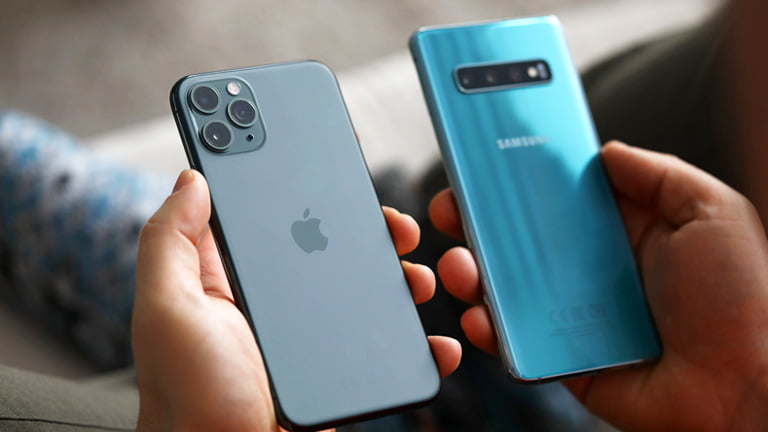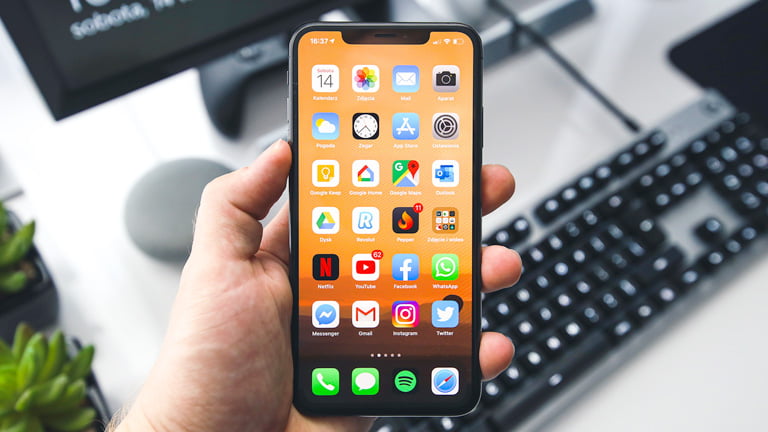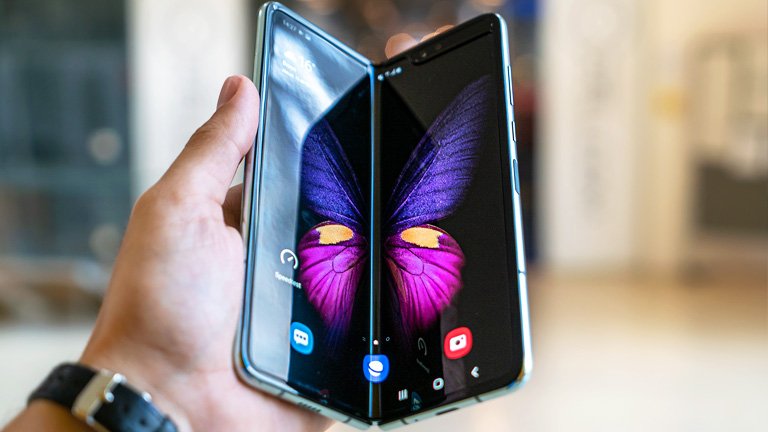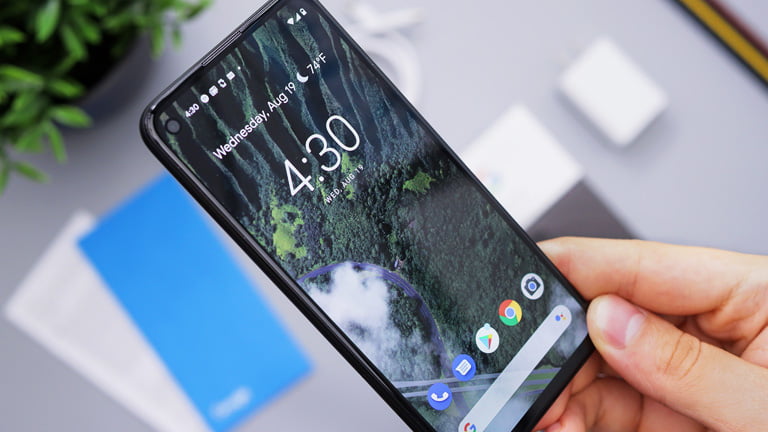
All the leading smartphone brands, including Apple, Samsung, Google, and more, have adopted eSIM technology in their latest smartphone models. The migration to eSIM technology is primarily due to its many benefits over traditional SIM card technology. Among the benefits is the ease of switching between phones since eSIM compatible phones don’t require you to physically swap out the SIM cards.
The ease of swapping out SIMs is specifically beneficial to travelers and users who frequently switch devices. However, to enjoy the benefits of eSIM technology, you must have an eSIM-compatible device. So, if you plan to travel in the near future, it is important to confirm if your device supports eSIM. To Simplify things, we have compiled a list of eSIM-compatible phones.
This list includes phones from major manufacturers such as Apple, Samsung, and Google. Whether you’re looking for a flagship phone or a more affordable option, this list will help you find a device that meets your needs and supports eSIM technology. If you want to search whether your device is compatible more easily, use Ctrl + F to type in your device name.

List of eSIM compatible phones – Apple iOS
The iPhone is among the most popular smartphones in the world right now. People love the iPhone because of its excellent cameras, privacy and security features, performance, build quality and overall user experience of iOS. To further enhance the iPhone experience, Apple adopted eSIM technology in 2018.
All the iPhones released in 2018 and beyond support dual-SIM and eSIM technology. eSIM technology on the iPhone allows you to connect to your favorite carrier’s network without inserting a physical SIM card into your phone. The process of setting up eSIM on your iPhone is entirely software-based.
Which iPhone models support eSIM?
- iPhone XR
The iPhone XR, released in 2018 is among the first iPhone devices to get dual-SIM support and eSIM technology. It features a 6.1-inch Liquid Retina display, a single 12-megapixel rear camera, up to 256GB storage, Apple’s A12 Bionic chip, and comes in a variety of vibrant colors.
- iPhone XS, iPhone XS MAX
The Apple iPhone XS and XS MAX were released along with the iPhone XR in 2018. They have high features, dual-SIM and eSIM support, including Apple’s A12 Bionic chip, up to 512GB storage, Face ID, and a dual-camera system. The XS has a 5.8-inch Super Retina OLED display, while the XS MAX has a larger 6.5-inch display.
- iPhone 11, iPhone 11 Pro, iPhone 11 Pro Max
Apple released the iPhone 11 series in 2019, all with eSIM support. Among the other top features of these devices includes Apple’s A13 Bionic chip, Face ID, and a triple-camera system for the pro models and a dual-camera system for the iPhone 11. The iPhone 11 comes with a 6.1-inch Liquid Retina LCD, the 11 Pro has a 5.8-inch Super Retina XDR OLED display, and the 11 Pro Max has a larger 6.5-inch display.
- iPhone SE 2 (2020), iPhone SE 3 (2022)
These are the entry-level iPhones that support eSIM. The iPhone SE 2nd gen was released in 2020, and the 3rd generation in 2022. The iPhone SE (2nd & 3rd Generation) features Apple’s A13 Bionic chip and A15 Bionic chip, respectively. They both have Touch ID, a 12-megapixel rear camera, and a 4.7-inch Retina HD display.
- iPhone 12, iPhone 12 Mini, iPhone 12 Pro, iPhone 12 Pro Max
The iPhone 12 series were released in 2020, and they all support eSIM and dual-SIM technology. They have features, including the A14 Bionic chip, 5G connectivity, Face ID, a dual-camera system for the 12 and 12 mini and a triple-camera system for the pro models. The iPhone 12 and 12 Mini have a 6.1-inch and 5.4-inch Super Retina XDR OLED display, respectively, while the 12 Pro and 12 Pro Max have a 6.1-inch and 6.7-inch OLED display.
- iPhone 13, iPhone 13 Mini, iPhone 13 Pro, iPhone 13 Pro Max
The iPhone 13, 13 Mini, 13 Pro, and 13 Pro Max were released in 2021. They all support eSIM. Their other features include the A15 Bionic chip, 5G connectivity, and Face ID. The iPhone 13 and 13 Mini have a 6.1-inch and 5.4-inch OLED display and dual-camera system. The 13 Pro and 13 Pro Max have a 6.1-inch and 6.7-inch OLED display with a triple-camera system and additional features, such as ProMotion technology and ProRes video recording.
- iPhone 14, iPhone 14 Plus, iPhone 14 Pro, iPhone 14 Pro Max
The iPhone 14, 14 Plus, 14 Pro, and 14 Pro Max were released in 2022. They all have eSIM support and other great features, including the A15 Bionic chip, 5G, and Face ID. The iPhone 14 and 14 Plus have dual cameras and a 6.1-inch and 6.7-inch Super OLED display, respectively. The 14 Pro and Pro Max have a 6.1-inch and 6.7-inch Pro-OLED display with additional features such as a telephoto lens, LiDAR scanner, ProMotion technology, and the dynamic Island.
- iPhone 15 Series (will be released later in 2023)
Like the preceding iPhone models, we expect the iPhone 15 series to support eSIM technology. Apple will release them in September this year, with several other improvements over the iPhone 14 series.
Which iPhone devices don’t support eSIM?
You should check the if your iPhone device doesn’t have following conditions.
- All Carrier-locked iPhones. They only support eSIM for the carrier they’re locked to.
- All iPhones sold in Mainland China, Hong Kong, and Macao. However, some iPhones (iPhone 13 mini, iPhone 12 mini, iPhone SE (2nd and 3rd generation), and iPhone XS) from Hong Kong and Macao only support eSIM.
- iPhone X, iPhone SE 1 Generation, and all the other older iPhones, including the iPhone 8, 7, 6s, and 6 series.
How do I check if my iPhone supports eSIM or not?
To make sure your device actually supports iPhone eSIM, you should check the following conditions.
- Make sure that your iPhone is unlocked
Go to Settings – General – About and scroll down, Find “Network Provider Lock” and check that it says “No SIM restrictions” to use SIMs from other carriers. - Make sure that your iPhone supports dual SIM
Go to Settings – General – About and scroll down to see if you have 2 IMEI numbers, to use dual SIM with eSIM. - Make sure that your iPhone supports eSIM
Go to Settings – Cellular and see if you have an “Add eSIM” button or “Add Cellular Plan” button to add a secondary eSIM.

List of eSIM compatible phones – Samsung Android
Samsung is the most popular Android device in the world. Millions of people buy Samsung phones thanks to their gorgeous displays, great cameras, build quality, performance, and competitive prices.
Most of the recently released Samsung devices (2019 and later) support eSIM allowing users to swap devices without having to remove/insert a physical SIM card.
Which Samsung models support eSIM?
- Samsung Galaxy S20 Series
The Samsung Galaxy S20 series, released in 2020, include the S20, S20+ and S20 Ultra. They all had eSIM support and other features, including 120Hz refresh rate displays (6.1-inch, 6.7-inch, and 6.9-inch, respectively), 5G connectivity, multi-camera systems and a powerful Snapdragon 865 or Exynos 990 processor depending on the region.
- Samsung Galaxy Note 20 Series
The galaxy Note 20 series include the Galaxy Note 20, Note 20 Plus, and Note 20 Ultra. They were all released in 2020, supports eSIM and have other features, including 120Hz refresh rate displays, 5G connectivity, an S Pen stylus with low latency and new Air Gestures, multi-camera systems, and a powerful Snapdragon 865 Plus or Exynos 990 processor (depending on the region).
- Samsung Galaxy Z Fold Series
The Z Fold also has four generations, including the Z Fold 1, 2,3, and 4, released in Feb 2020, August 2020, 2021, and 2022. They also support eSIM technology and other flagship features, including a tablet-size folding display, triple camera system, 5G connectivity, and flagship Snapdragon and Exynos chips available at their time of release.
- Samsung Galaxy Z Flip Series
The Z Flip Series include the Z Flip 1,2,3, and 4, released in Feb 2020, August 2020, 2021, and 2022. They all support eSIM and have other great features, including a dual-camera system, a folding OLED display, 5G connectivity, and flagship chips for buttery-smooth performance.
- Samsung Galaxy S21 Series
The S21 series include the Galaxy S21, S21+, and S21 Ultra, all released in 2021. They all had eSIM and features such as 120Hz refresh rate displays (6.1-inch, 6.5-inch, and 6.8-inch), 5G connectivity, multi-camera systems, and a powerful Snapdragon 888 or Exynos 2100 processor depending on device released region.
- Samsung Galaxy S22 Series
These include the Galaxy S22, S22+, and S22 Ultra, all released in 2022. They all had eSIM with dual SIM support and other great features, including 120Hz refresh rate displays (6.1-inch, 6.6-inch, and 6.8-inch), 5G connectivity, multi-camera systems, and the powerful Snapdragon 8 Gen 1 chip and Exynos 2200 (chip varies depending on your region)
- Samsung Galaxy S23 series
These include the Galaxy S23, S23+, and S3 Ultra. They were all released in February 2023 with eSIM with dual SIM support and 120Hz refresh rate displays (6.1-inch, 6.6-inch, and 6.8-inch, respectively), 5G connectivity, multi-camera systems, and the powerful Snapdragon 8 Gen 2 chip features.
Which Samsung phones don’t support eSIM?
To make sure your Samsung device actually supports eSIM, your device shouldn’t be matched with following conditions.
- Samsung Galaxy S20 FE 4G/5G
- Samsung S20/S21 (US and Canada versions)
- Galaxy Z Flip 5G (US and Canada versions)
- Samsung Note 20 Ultra (Versions from the US and Hong Kong)
- Samsung Galaxy Z Fold 2 (Versions from the US and Hong Kong)
- All Samsung S20 FE/S21 FE models
- All South Korean versions of most Samsung devices
- Most Samsung phones released before the S20 series, including the Samsung Galaxy Note 9, Note 10, Note 10+, S10, S10e, S10 Lite or S10+, S9 or S9+, S8 or S8+, S7, and all earlier devices
How do I check if my Samsung phone supports eSIM or not?
Please check the followings to make sure your Samsung device can be equipped with eSIM.
- Make sure that your Samsung phone is unlocked
Go to Settings – About Phone – Status and check if it says “Unlocked” in Network lock status, so that you can use SIMs from another network provider than your domestic provider. - Make sure that your Samsung phone supports dual SIM
Go to Settings – IMEI information to see if you have 2 IMEI numbers. If the “IMEI (eSIM)” is displayed, you can use dual SIM with eSIM feature. - Make sure that your Samsung phone supports eSIM
Go to Settings – SIM card manager to see if you have an “Add Mobile plan” button. If you can find it, you can use a secondary eSIM with your Samsung phone.
If you scan the QR code, and the “Add to the smart device / watch” message appears, there is a high possibility that your device is not compatible with eSIM.

List of eSIM compatible phones – Google Android
The Google Pixel is a popular Android device, especially in the USA and Canada. It is the ideal device for anyone who loves the stock-android experience and great photography. Google was among the first Android devices to adopt eSIM technology. They introduced this feature with Google Pixel 2 in 2017.
With eSIM-capable Google Pixel, you can switch between different Pixel phones without physically swapping out the SIM cards since the SIM system is embedded into the device’s hardware. Below is a list of all Google devices that support eSIM.
Which Google Pixel devices support eSIM?
- Google Pixel 2, Google Pixel 2 XL
The Google Pixel 2, released in 2017, supports eSIM. It also features 5-inch and 6-inch OLED displays, a 12-megapixel camera with advanced photo features and Google Lens integration, Google Assistant integration, and a powerful Snapdragon 835 processor.
- Google Pixel 3, Google Pixel 3 XL, Google Pixel 3a, Google Pixel 3a XL
The Pixel 3 and 3 XL were released in October 2018, and the 3a and 3a XL were released in May 2019. They all had eSIM support, with the Pixel 3 and 3 XL having high-end features, including a 12.2-megapixel camera with advanced AI-based features, a 5.5-inch (3) or 6.3-inch (3 XL) OLED display, and a Snapdragon 845 processor. The Google Pixel 3a and 3a XL were more affordable options with a 12.2-megapixel camera, Google Assistant integration, and a Snapdragon 670 processor.)
- Google Pixel 4, Google Pixel 4a, Google Pixel 4 XL
The Google Pixel 4 and 4 XL, released in 2019, had eSIM support and various features including a 90Hz refresh rate display, advanced facial recognition technology, a dual-camera system, and the Snapdragon 855 processor. The Google Pixel 4a, released in 2020, also supports eSIM and has other features, including a 5.81-inch OLED display, a 12.2-megapixel camera and a Snapdragon 730G processor at a more affordable price.
- Google Pixel 5, Google Pixel 5a
The Pixel 5 was released in 2020. It also has eSIM support and other features, including a 6-inch OLED display, 5G connectivity, a dual-camera system, and a Snapdragon 765G processor. The Google Pixel 5a, released in 2021, had a larger 6.34-inch OLED display, 5G connectivity, a dual-camera system, and a Snapdragon 765G chip.
- Google Pixel 6, Google Pixel 6 Pro, Google Pixel 6a
Google released the Pixel 6 and 6 Pro were released in 2021. They both had eSIM support and other features, including a new Google Tensor chip, a 6.4-inch (6) or 6.7-inch (6 Pro) OLED display, a double and triple camera set-up, respectively, and 5G connectivity. The Google Pixel 6a also had the Google Tensor Chip, a 6.1-inch OLED display, a dual-camera system, 5G connectivity, and eSIM support.
- Samsung Galaxy Z Fold Series
The Z Fold also has four generations, including the Z Fold 1, 2,3, and 4, released in Feb 2020, August 2020, 2021, and 2022. They also support eSIM technology and other flagship features, including a tablet-size folding display, triple camera system, 5G connectivity, and flagship Snapdragon and Exynos chips available at their time of release.
- Google Pixel 7, Google Pixel 7 Pro
Google released the Pixel 7 and 7 Pro in 2022. They both had eSIM support with other great features, including the Google Tensor Gen 2 chip, a 6.4-inch (6) or 6.7-inch (6 Pro) OLED display, a double and triple camera set-up, respectively, and a 5G connectivity.
- Google Pixel 8 Series (will be released in later 2023)
The Google Pixel 8 devices are expected to come later this year (in October) with eSIM support, the next-generation tensor chip, and other flagship specs.
Which Google Pixel devices don’t support eSIM?
Your Google Pixel device shouldn’t fall under the conditions below to use eSIM.
- Carrier-locked Google Pixel devices and all other devices that use international data service
- Google Pixel 3 series models sold in Australia, Taiwan, and Japan and those bought with service from the US or Canadian carriers other than Sprint and Google Fi
- Pixel 3a sold in South East Asia and with Verizon service
- Google Pixel and XL, Google Pixel 2 and 2XL (without Google Fi)
- All Google Pixel devices released before 2017
How do I check if my Google Pixel supports eSIM or not?
Please check the followings to make sure your Samsung device can be equipped with eSIM.
- Make sure that your Google Pixel is unlocked
Go to Settings – Connections – Network and internet – Mobile network. Tap ‘Choose network’ or ‘Automatically select network’. If your phone shows several available networks, it’s unlocked. - Make sure that your Google Pixel supports dual SIM
Go to Settings – About phone – IMEI, and see if you can find “IMEI (SIM slot 2)” to use dual SIM with eSIM feature. - Make sure that your Google Pixel supports eSIM
Go to Settings – Network & Internet – Mobile network. Then select Operator – Add Operator – “Don’t have a SIM card?” – Next. If you can scan the QR code, you are able to use eSIM with your device.
Final thoughts
Overall, eSIM technology is becoming increasingly popular among smartphone users as it offers more convenience, security, and flexibility than traditional SIM cards. With eSIM, you can easily use local data abroad without physically removing your SIM cards. This article provides a comprehensive list of all Apple, Samsung and Google phones that support eSIM. However, it is important to note that eSIM support may vary depending on the manufacturer and location.
The good news is that all the popular network providers in the USA support eSIM networks. So, if you have checked that you have an eSIM compatible phone and if you intend to travel to the USA soon, consider checking out eSIM USA data plans to get some of the best data plan deals. eSIM USA offers a variety of data plans, including fixed and unlimited data plans that you can select from depending on your budget and the amount of data you need for your trip.
Related Products
-
Product on sale
 eSIM USA Fixed Plans$3.99 USD – $39.99 USD
eSIM USA Fixed Plans$3.99 USD – $39.99 USD -
Product on sale
 eSIM USA Unlimited$11.99 USD – $77.99 USD
eSIM USA Unlimited$11.99 USD – $77.99 USD



